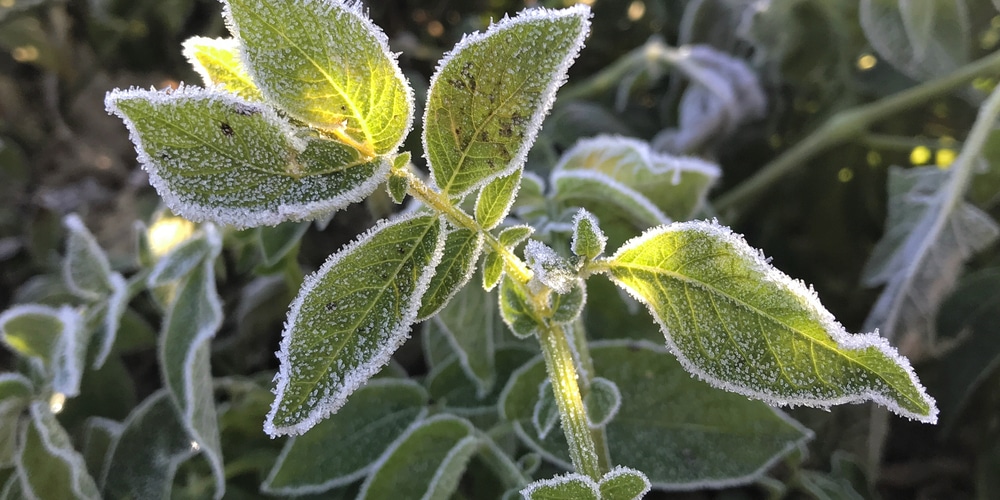Potatoes are typically planted in early spring and when all risk of frost has passed. You might, however, have made the mistake of planting them too early and are now wondering, ‘will frost kill potatoes?’
Let’s get to the finer details of how you can make your potatoes survive the winter.
How Much Frost Can Potatoes Handle?

It’s perfectly normal to worry about frost killing your potato plants, but the truth is that they’re hardy and can usually survive the cold. As long as you’ve planted potatoes at the right depth, which is around 1 to 3 inches then they should be okay.
It’s worth noting that potatoes will likely suffer minor stem and leaf damage when exposed to light frost, while a hard frost will kill the stems and leaves above the ground. Light frost is defined as temperatures between 29 to 32 degrees F, or 1.6 to 0 degrees C, and a hard frost is defined as temperatures between 25 to 28 degrees F, or minus 3.8 to minus 2.2 degrees C.
Potatoes, otherwise known as Solanum tuberosum, grow best in USDA zones 3 through 10 and can survive both light and hard frosts in the said regions.
When Will Frost Kill Potatoes?
The good news is that potatoes will likely survive light and hard frost, even ones that seemingly appear out of nowhere in spring.
However, you will be faced with several drawbacks. Remember, potatoes will not budge until the ground has warmed up to at least 45 degrees F, or 7.2 degrees C, so it might be better to just wait until then to plant potatoes.
Plummeting temperatures will also cause potato seedlings to grow slower, and damaged plants will have to expend more energy to recover. Potatoes get damaged by frost when the temperatures reach 28 degrees F and below, but there are some precautions you can take to protect your plants from the cold.
How to Protect Potatoes From Frost
The right planting depth can mean the difference between a ruined plant and one that carries on after the risk of frost has passed. If you’re worried about the cold affecting your potato seeds then you can plant them 2 to 3 inches deep.
Ground slope and elevation can play a role in helping your potatoes survive a hard frost. Potatoes planted in a depressed ground will likely suffer greater frost damage than those on slopes and elevations. If you’re planting potatoes in rows you can opt for a mounded row system so the soil warms faster (and encourages your plants to grow sooner).
Mulch is another effective solution for shielding your potatoes from frost. Consider adding straw material several inches on the top of the soil to protect the seedlings from cold winds, and so the ground will stay warmer.
If you do have the budget, then we recommend buying commercial row covers for your plants. Get a cover that’s made from fabric as it works better compared to paper or plastic covers. You can use DIY covers in a pinch, but then your potatoes might suffer from leaf burn as a result of the sun’s heat transferring from the cover to your plants.
Alternatively, you can grow potato seedlings indoors and plant them outside once frost passes and the ground starts warming up. Plant the seed potatoes, then expose them to indirect lighting and temperatures of 55 degrees F or higher and they’ll soon sprout buds and small leaves.
When you’re ready to transplant, cut off the starts at a half-inch or so and allow them to harden off for a day before bringing them outside.
Related Article: When to Harvest Potatoes?
